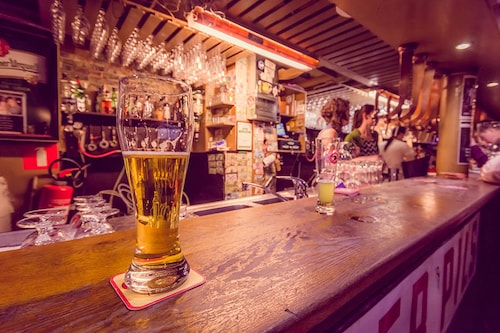Evolving with the times: Beer consumption in Europe
On International Beer Day, take a look at a beverage that is still very much in vogue in Europe despite a host of new approaches to its brewing, marketing and consumption


International Beer Day is feted on the first Friday of August. For this year"s celebration, on August 4, we take a look at a beverage that is still very much in vogue in Europe despite a host of new approaches to its brewing, marketing and consumption.
France may be associated with wine-drinking in the public imagination but the favorite alcoholic beverage of the French is now beer. According to the latest Sowine/Dynata barometer, beer is neck-and-neck with wine as being one of French consumers" favorite beverages (56% vs 55%). Whether it"s being enjoyed in front of a soccer World Cup match, as a toast to the weekend on a Friday night, or as one strolls through a summer music festival, beer lends itself to a variety of festive occasions. With the French consuming an average of 33 liters per capita per year, the beer aisle has been evolving to become more varied. From Mirabelle plum beer and other flavored brews to IPA and all its American and Belgian variants, craft beer has offered new tastes to consumers. Craft beer, first introduced by small, US-based breweries, has become so popular that it"s become fully entrenched in the beer landscape.
During the same time frame, non-alcoholic beer production in Germany has skyrocketed with growth of 96%, with 474 million liters of non-alcoholic beers produced by 2022. A trend not to be overlooked, since even if the country doesn"t count the most breweries in Europe—1,512 compared to 1,810 in the UK and 2,500 in France in 2021 —the German brewing sector generates the highest number of direct jobs, at 27,242 compared to just 9,500 in Poland and 8,000 in France. "One of the factors behind the brewing industry"s success is its innovative strength, which is also reflected in the growing segment of alcohol-free beers. Germany is the world leader in this field, with over 700 alcohol-free brands brewed in accordance with the [beer] purity, and a market share of over 7%," explains Holger Eichele, General Manager of Deutscher Brauer-Bund.
Alongside these new trends that have changed the playing field in the beer industry, things are being further shaken up by new products that blur the boundaries between different types of alcohol. Last April, Loà¯c Raison, a cider brand of French-based Eclor group, unveiled a new product that uses the infusion of hops to add subtle bitter and floral notes. This innovation is one of a number of daring attempts to offer lightly alcoholic beverages that open up more possibilities for consumers. Another example is France"s Brasserie Gallia, which teamed up with Paris-based sake house Wakazé to produce a hop-flavored sake. A blend of hops from the fermentation of an East IPA was used as an unexpected ingredient to create a new made-in-France twist on the Japanese-style rice wine. Gallia also created an unusual beer by integrating koji, a fungus used in Japan for brewing sake and soy sauce.
First Published: Aug 04, 2023, 17:59
Subscribe Now